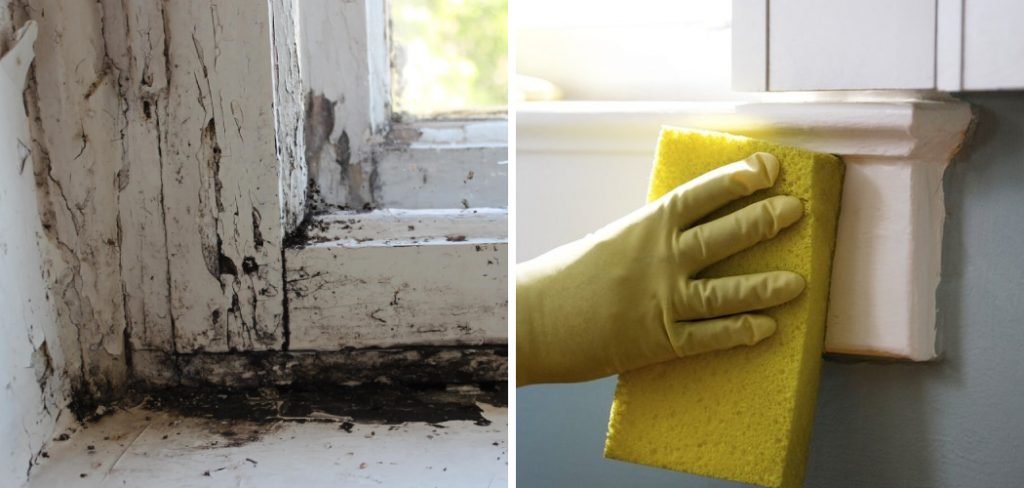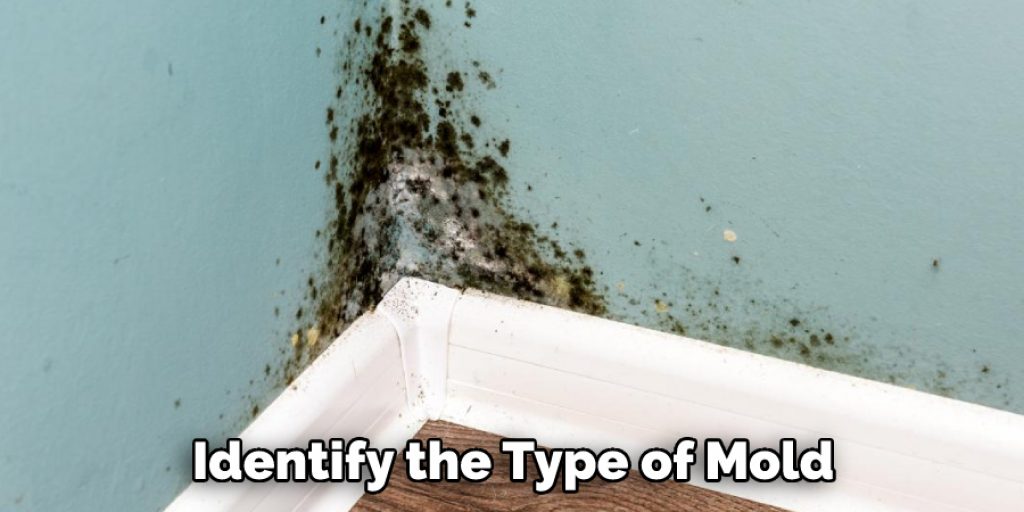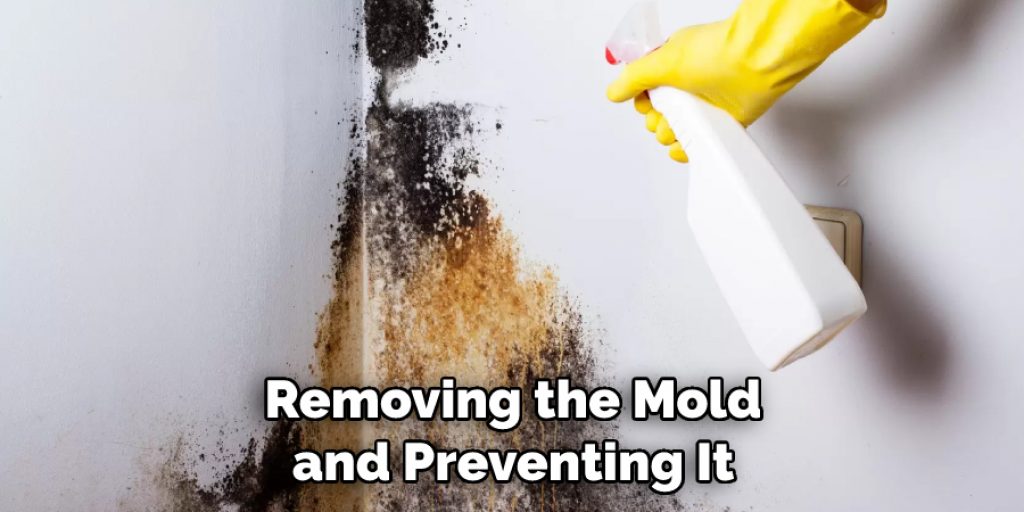How to Get Rid of Mold on Windows
Mold is not only unsightly but also harmful to human health, especially when it comes to windows. This is because mold in windows traps moisture and creates a breeding ground for bacteria.

If left untreated, it can cause respiratory problems, allergies, and even more serious health hazards. To help you combat this menace, we have compiled a comprehensive guide on how to get rid of mold on windows once and for all.
Can You Get Rid of Mold on The Windows?
Mold on your windows not only looks unsightly, but it can also cause health issues if left untreated. Fortunately, there are various methods you can use to eradicate this pesky problem. One popular solution is to mix vinegar and water, spray it on the affected areas, and then wipe it away with a cloth.
Alternatively, you can use tea tree oil or hydrogen peroxide to address the issue. Prevention is key, so make sure to keep your windows dry and well-ventilated to avoid mold growth in the future. With the right approach, you can not only get rid of mold on your windows but also restore your home’s beauty and ensure your loved ones’ health.
Why Should You Get Rid of Mold on Windows?
Mold on windows can be unsightly, but it’s also a health hazard that shouldn’t be taken lightly. Breathing in mold spores can lead to respiratory issues, allergies, and even more serious health problems. Getting rid of mold on your windows can help improve the air quality in your home and make it a healthier place to live.
Not only that, but removing mold can also help prevent it from spreading to other areas of your home and causing even more damage. Don’t let mold on your windows go unchecked – take action to eliminate it and keep your home safe and healthy.
How to Get Rid of Mold on Windows – 7 Ways to Follow
1. Identify the Cause of Mold
Before you begin the process of getting rid of mold on your windows, you need first to identify its cause. This is because mold only grows in the presence of moisture, so you need to eliminate the source of moisture before you start treating the mold. Common sources of moisture include leaky windows, high humidity, and condensation. Once you’ve identified the cause, you can then proceed to the next step.
2. Use Vinegar
Vinegar is a popular and effective way to get rid of mold on windows. To do this, mix equal parts of white vinegar and water in a spray bottle and spray it on the affected areas. Leave it for a few hours before wiping it off with a damp cloth. If the mold is stubborn, scrub it gently with a toothbrush or soft-bristled brush before wiping it off.

3. Use Hydrogen Peroxide
Hydrogen peroxide is another effective remedy for getting rid of mold on windows. To use this method, mix equal parts of hydrogen peroxide and water, then apply it to the affected area. Allow it to sit for about 10-15 minutes before wiping it off with a damp cloth. This should remove the mold on the windows quickly and effectively.
4. Use Baking Soda
Baking soda is another great way to get rid of mold on windows, as it is a natural detergent. To use this method, mix a quarter cup of baking soda with water to make a paste, then apply it to the affected areas. Allow it to sit for an hour before wiping it with a damp cloth. The baking soda paste should help remove mold on the windows and also prevent it from growing again.
5. Improve Ventilation
Poor ventilation in your home is one of the primary causes of mold growth on windows. To prevent this, ensure that you open windows and doors frequently to allow proper air circulation. You can also use a dehumidifier to reduce moisture levels in your home. This will go a long way in preventing mold from growing on your windows.
6. Use Bleach
If the above methods fail to remove the mold on your windows, try using bleach, as it is highly effective. To use this method, mix one part bleach with ten parts water and apply it to the affected areas. Leave it for about 15 minutes before wiping it off with a damp cloth. Make sure to wear protective gloves and masks when using bleach.
7. Clean Regularly
To keep your windows mold-free, make sure to clean them regularly. Wipe down the windows every week with a damp cloth and use a window cleaner for tougher stains. This will help prevent the build-up of dirt and grime, providing the perfect environment for mold to grow.
These are some of the most effective ways to get rid of mold on windows. With regular maintenance and cleaning, you should be able to keep your windows looking brand new and free from any signs of mold.
5 Considerations Things When You Need to Get Rid of Mold on Windows
1. The Type of Mold
There are many different types of mold, and each one requires a different method of removal. It is important to identify the type of mold that is present on your windows in order to choose the most effective removal method.

2. The Severity of The Mold
Mold can be a minor nuisance to a serious health hazard. It is important to assess the severity of mold growth on your windows in order to determine the best course of action.
3. The Size of The Affected Area
The larger the area that is affected by mold, the more difficult it will be to remove. If the moldy area is small, you may be able to remove it yourself with some simple cleaning supplies. However, if the affected area is large, hiring a professional Mold Remediation company may be necessary.
4. The Material of The Window
The type of material your window is made of will affect the removal process. For example, if your window is made out of wood, you will need to take special care not to damage the wood while removing the mold.
5. The Cause of The Mold
It is important to try and determine the cause of the mold growth on your windows. If you can identify and fix the problem that is causing the mold (e.g., excessive moisture), you may be able to prevent it from returning in the future.
Removing mold on windows can be tricky, but it is not impossible by any means.
By taking the time to identify the mold type and assess its severity, you can choose the best course of action for removing the mold and preventing it from coming back in the future.

5 Benefits of Getting Rid of Mold on Windows
1. Mold Can Cause Serious Health Problems.
Mold can cause a variety of respiratory problems, including asthma and bronchitis. Also, mold exposure has been linked to several neurological problems, such as memory loss and depression. In some cases, mold exposure can even lead to death.
2. Mold Can Damage Your Home.
Mold can cause extensive damage to your home, particularly if it is left unchecked. Mold can eat away at wood and drywall, and it can also cause paint to peel and wallpaper to blister. In extreme cases, mold infestations can even lead to the collapse of ceilings and walls.
3. Mold Can Ruin Your Belongings.
Mold can ruin clothing, furniture, books, and a variety of other belongings. Once mold takes hold of an item, it is often difficult or impossible to remove it without damaging the item beyond repair.
4. Mold can be difficult to remove.
Mold is notoriously difficult to remove from surfaces, and it often returns even after being cleaned. This is because mold spores are tiny and easily spread through the air, making it hard to eliminate them. Additionally, many common cleaning products are not effective against mold spores.
5. Preventing mold growth is the best way to deal with it.
The best way to deal with mold is to prevent it from growing in the first place. This can be done by keeping windows clean and dry, repairing any leaks promptly, and using an air purifier or dehumidifier in areas where mold is likely to grow.

Taking these steps can help to significantly reduce the risk of mold growth and save you time, money, and effort in the long run.
Conclusion
Mold on windows can be a pesky problem that can cause serious health hazards if left untreated. However, using the right methods, you can quickly and effectively eliminate it. This guide provides some of the most effective solutions, including vinegar, hydrogen peroxide, baking soda, and improving ventilation, which should help you eliminate mold on windows once and for all.
Remember to identify the cause of the mold before you begin treatment and to take measures to prevent future growth. With these tips, you can breathe easy knowing that your home is free from mold. Thanks for reading our post about how to get rid of mold on windows.




